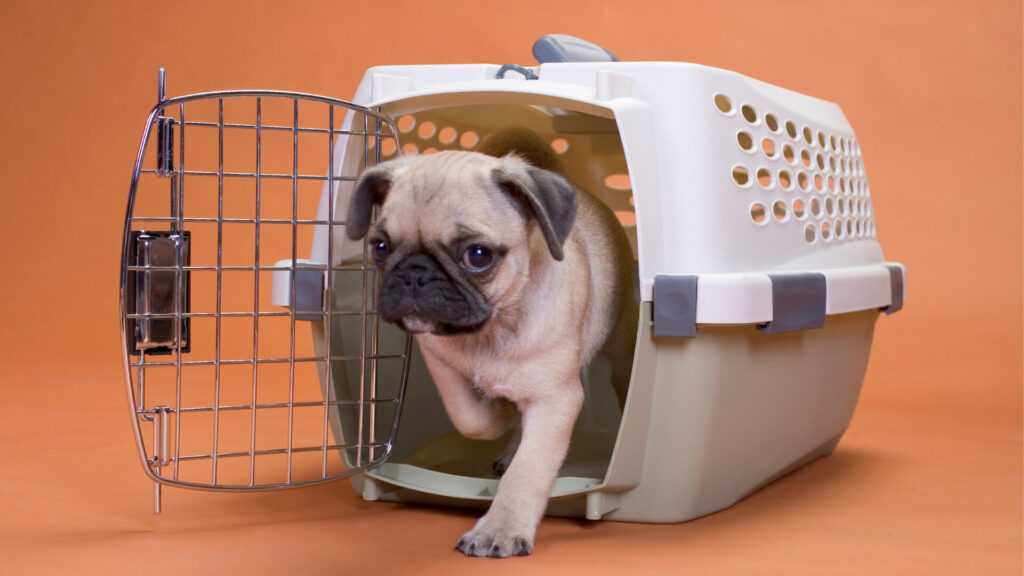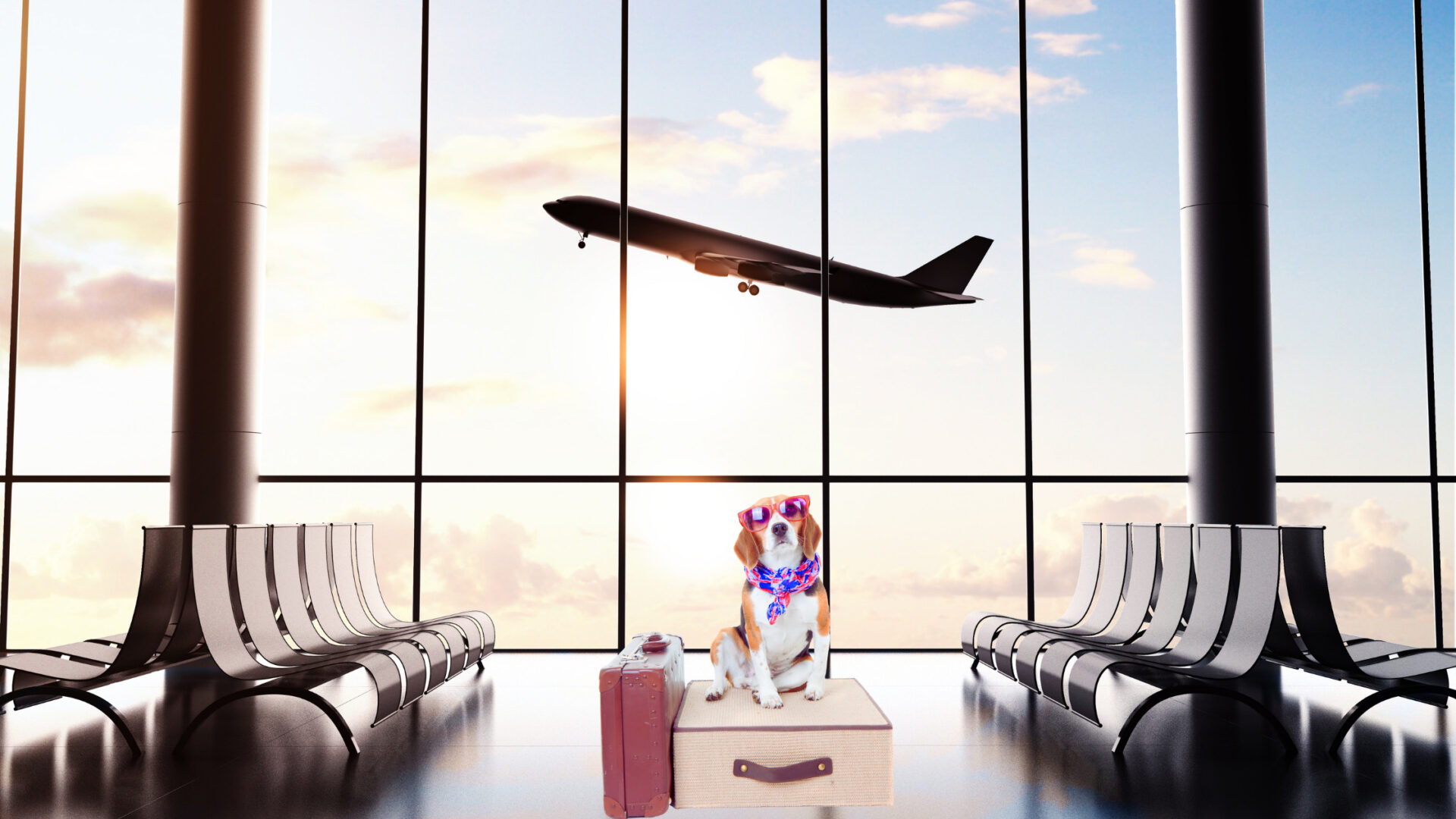
When it comes to traveling with your pets, you want to make sure they’re comfortable and safe, no matter where they’re going. Whether they’re traveling in the cabin or as cargo, it’s important to choose the right type of crate for your furry friend. That’s why we’ve put together this guide to airline pet cargo crate requirements, so you can make the best choice for your pet’s travel needs.
Why Use a Pet Cargo Crate?
Before we get into the nitty-gritty of crate requirements, let’s take a moment to talk about why using a pet cargo crate is so important. When your pet travels as cargo, they’ll be traveling in a temperature-controlled and pressurized compartment under the cabin. This ensures that they’re safe and comfortable during their journey, no matter where they’re going. Most airlines accept live animals as cargo, but there are a few exceptions, so it’s important to check with your airline before booking your pet’s travel.
Requirements for Pet Cargo Crates
So, what are the requirements for a pet cargo crate? The International Air Transport Association (IATA) set the standards for pet crates that most airlines have adopted.
Your pet must travel in a crate that meets these regulations and any additional requirements set by the airline. Here are the basic IATA requirements:
- The crate must be large enough for your pet to stand, turn around, and lie down comfortably.
- You must ensure that the crate consists of fiberglass, metal, rigid plastics, weld metal mesh, solid wood, or plywood.
- The floor must be solid and leak-proof.
- The crate door must have a secure, all-around locking system with pins that extend at least 1.6 cm (5/8 in) beyond the door.
- The crate must have ventilation on a minimum of three sides (domestic flights) and four sides (international flights).
- The crate must have live animal stickers and a Shipper’s Declaration attached to it.
- You should identify the crate with your pet’s name and your contact information.
In addition to these requirements, many airlines have their own rules, so it’s important to check with your airline before you travel.
Sizing Your Pet Crate
Measuring your pet is a crucial step in selecting the right size crate. Your pet’s crate must be large enough for them to stand, turn around, and lie down comfortably. Use the chart below to measure your pet for their crate:
- A = length of animal from nose to root of tail
- B = height from ground to elbow joint
- C = width across widest part of pet (usually the shoulders)
- D = height of animal in standing position, including the pet pad
The length of the kennel must be equal to A + 1/2 B. The width of the kennel must be equal to Cx2. The height of the kennel (top flat or arched) must be equal to D.
For international flights, some airlines require different measurements, so be sure to check with your airline of Relocations Agent before you travel.
Extra Crate Recommendations
Once you’ve got the perfect pet crate for your furry friend, there are a few things you can do to make their journey even more comfortable. Here are our top recommendations:
- Make your pet familiar with the new crate to reduce their anxiety during air travel.
- Clearly display your pet’s name and your contact information on the crate to prevent them from getting lost in transit!
- Include a comfortable pet pad or shredded newspaper in the crate to give your furry friend something soft to lie on.
- In case of any need to take your pet out, attach a leash and collar to the outside of the crate.
- Print your pet’s name on the outside of the crate, along with your own name and contact information. This way, everyone knows who your pet is and how to reach you.
- Include an unwashed t-shirt with your scent on it to help comfort your pet during the journey.
- Tape a copy health certificate and any other necessary documents to the top of the crate in a Ziplock bag, marked “DO NOT REMOVE!” – Pet Import Regulations in the UAE
By following these recommendations, you can help ensure that your pet has a safe and comfortable journey. Remember, a little extra effort goes a long way in making air travel a positive experience for everyone involved!
We hope that this blog post has been helpful in guiding you through the process of relocating your pet to the UAE. At Chauf-fur, we understand how important your pet is to you and how stressful the relocation process can be. If you have any more questions or concerns about relocating your pet to the UAE, please don’t hesitate to get in touch with us. Our team of experts is here to assist you in any way we can to ensure that your furry friend has a smooth and stress-free transition to their new home.

 Call +971559927669
Call +971559927669 


[…] airline pet cargo crate requirements to ensure a safe and cozy environment for your […]
[…] you embark on your Dubai adventure, make sure your pet’s crate meets airline pet cargo crate requirements and learn about the importance of microchipping for international pet […]
[…] to check the specific requirements of the airline you’re traveling with, as these can vary. Our complete guide walks you through this […]
[…] safety in mind during travel, especially during long flights. Check our blog to understand airline pet cargo crate requirements for a safe and comfy […]
[…] of measuring your pet for the perfect crate. It may seem simple, but ensuring the crate meets airline pet cargo crate requirements can be daunting for a novice. Professional pet relocators simplify this task and ensure your pet is […]
[…] Hamsters, guinea pigs, and gerbils are adorable, but their travel needs are no less intricate than their bigger counterparts. They’re prone to anxiety, especially during air travel. And while we have tips for reducing pet anxiety during flights, it’s crucial to ensure you meet the airline’s cargo crate requirements. […]
[…] unique challenges and opportunities. If you decide to travel with your pet during this season, keeping your furry friends safe and comfy is crucial. Investing in a well-insulated crate can make all the […]
[…] A well-fitted crate isn’t just a regulatory requirement; it’s your pet’s home away from home. For pets with mobility issues, the right bedding can help alleviate pressure points. See how to make their travel crate a safe and comfy space. […]
[…] for pet crates, so it’s important to get one that meets these standards. Check out our complete guide to airline pet cargo crate requirements for more […]